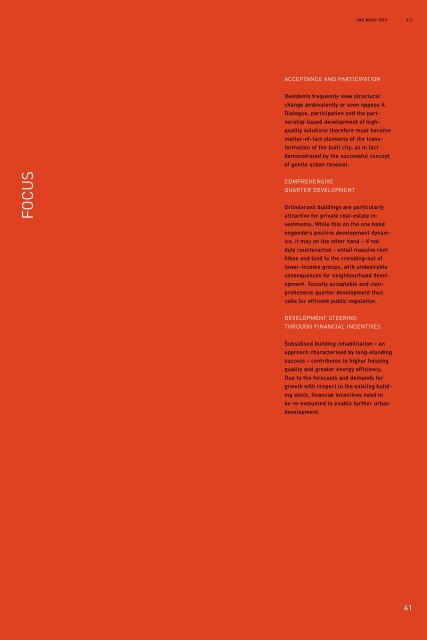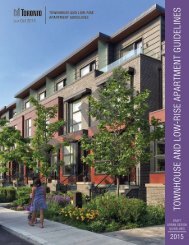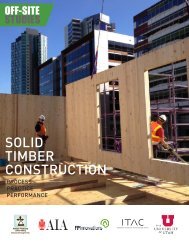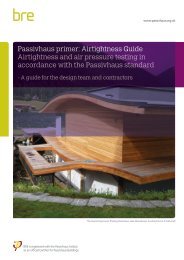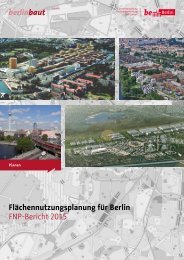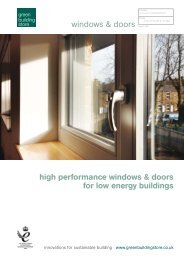TRUE URBAN SPIRIT
b008379b
b008379b
You also want an ePaper? Increase the reach of your titles
YUMPU automatically turns print PDFs into web optimized ePapers that Google loves.
THE BUILT CITY 2.1<br />
DA–IK<br />
ACCEPTANCE AND PARTICIPATION<br />
Residents frequently view structural<br />
change ambivalently or even oppose it.<br />
Dialogue, participation and the partnership-based<br />
development of highquality<br />
solutions therefore must become<br />
matter-of-fact elements of the transformation<br />
of the built city, as in fact<br />
demonstrated by the successful concept<br />
of gentle urban renewal.<br />
FOCUS<br />
COMPREHENSIVE<br />
QUARTER DEVELOPMENT<br />
Gründerzeit buildings are particularly<br />
attractive for private real-estate investments.<br />
While this on the one hand<br />
engenders positive development dynamics,<br />
it may on the other hand – if not<br />
duly counteracted – entail massive rent<br />
hikes and lead to the crowding-out of<br />
lower-income groups, with undesirable<br />
consequences for neighbourhood development.<br />
Socially acceptable and comprehensive<br />
quarter development thus<br />
calls for efficient public regulation.<br />
DEVELOPMENT STEERING<br />
THROUGH FINANCIAL INCENTIVES<br />
Subsidised building rehabilitation – an<br />
approach characterised by long-standing<br />
success – contributes to higher housing<br />
quality and greater energy efficiency.<br />
Due to the forecasts and demands for<br />
growth with respect to the existing building<br />
stock, financial incentives need to<br />
be re-evaluated to enable further urban<br />
development.<br />
41


